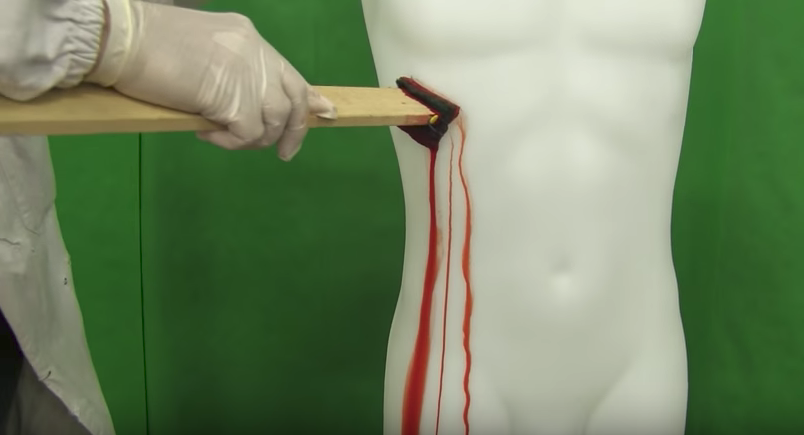
The Shroud of Turin, long considered by some to be the burial cloth of Jesus, has inconsistent bloodstain patterns that suggest it is a fake, a new forensic investigation has found.
Held in the Cathedral of St. John the Baptist in Turin, Italy, the shroud bears an image of a crucified man. It has been analyzed for decades, to some controversy, with radiocarbon dating determining its origin to be between 1260 and 1390. It is regarded by the Vatican as an icon, rather than a genuine religious relic. More than 2 million people came to see the shroud during a three-month display in 2015, including Pope Francis.
The bloodstain pattern investigation reported on Tuesday by the Journal of Forensic Sciences is the first such analysis of the cloth, looking at its purported blood splatters and their alignment to each other in a kind of crime scene analysis. The researchers concluded that the linen appears patched with bloodstains from a standing model, not a crucified man or facedown corpse, adding to evidence that the shroud is a medieval fraud.
“This is the kind of forensic work done all the time in police investigations,” Matteo Borrini, a forensic scientist at Liverpool John Moores University in the United Kingdom, told BuzzFeed News. “Even a crucified or hanging person should leave a distinct blood pattern on the cloth, which would be fascinating information to have.”
Borrini conducted the analysis with chemist Luigi Garlaschelli of the University of Pavia in Italy, using real and synthetic blood samples on cloth to test the orientation of stains on the better-defined left side of the cloth (they also compared the two liquids to see if they flowed the same way). They hoped to answer a debate over whether the crucifixion depicted on the cloth was T-shaped, Y-shaped, or some other manner of ancient Roman execution.
Instead, they found that the bloodstains are inconsistent with any one pose, suggesting that a standing model was used to imprint the patterns at different angles for the hands, chest, and back. If it were a death shroud of a bleeding, executed person, hung on a cross, or pulled down from one for burial, Borrini said, “the bloodstains shouldn’t be so inconsistent.”
In the analysis, the two researchers conducted seven different bloodstain tests on different body parts depicted on the fabric: the hand, forearm, chest, and lower back, along with a belt of blood (whether it is actually blood or paint pigments is another disputed forensic question) at the waist. By pumping blood onto a model at wound points depicted on the shroud, they could compare the angle that gravity pulled the liquid against the direction seen on the linen.
They discovered the angle at which gravity would pull blood dripping from a body in the way seen on the shroud varied with the body part: The forearm rivulets corresponded to an arm held straight out around 90 degrees to the side, for example, while the hand marks matched an arm held out at about 45 degrees. Some hand bloodstains traced angles at odds with each other as well, off by as much as 10 degrees. A simulated spear wound in the chest ran in completely different patterns than the one on the shroud, whether standing or prone. “This is just not what happens to a person on a cross,” Borrini said.

“Overall, the approach is founded in science and the methodology sound,” bloodstain pattern expert Jonathyn Priest of Bevel, Gardner and Associates Inc. in Norman, Oklahoma, told BuzzFeed News by email. But he cautioned that the conclusions were based on body parts held in a fixed position, rather than accounting for carrying a body, cleaning a body, or preparing a body for burial, which might bear more study.
Notably, he added, blood flow from the wrists on the shroud would “more than likely” have required a bigger source than the small veins and arteries in the hands can provide. “This means the heart was likely beating at the time of creation,” said Priest.
“The fact that flowing bloodstains exist at all on a deceased body that was reportedly cleaned also raises questions.”
The study researchers took inspiration for the work from a 1950s effort by a French doctor, Pierre Barbet, who nailed actual corpses to a cross that was lying flat on the floor. Borrini said that forensic investigators are often called upon to perform bloodstain analyses based on photos from a crime scene in similar fashion to the study, making it a natural approach.
As a Roman Catholic, Borrini said that his own religious faith didn't rely on icons such as the shroud.
“The church itself would like to know what things are real, and what are not,” he said. “This isn’t the Middle Ages anymore.”

